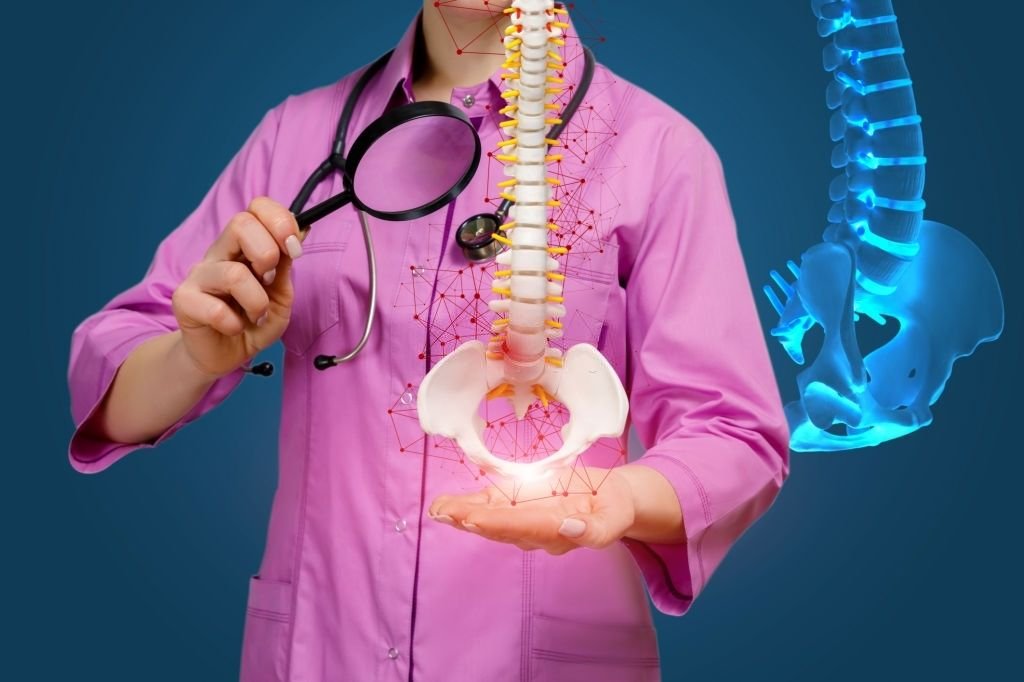Injuries are a part of life, and when they happen, it’s important to know how to treat them properly. Acute musculoskeletal injuries, such as sprained ankles or pulled muscles, can cause significant pain and discomfort. That’s why having a step-by-step guide to treating these injuries is crucial for a quick and effective recovery.
In this comprehensive article, we will provide you with a clear and concise roadmap to treating acute musculoskeletal injuries. Whether you’re an athlete, fitness enthusiast, or simply someone who has experienced a recent injury, this guide will equip you with the knowledge and strategies needed for a successful recovery.
Understanding Acute Musculoskeletal Injuries
Acute musculoskeletal injuries refer to injuries that occur suddenly and as a result of trauma or overexertion. These types of injuries can range from sprains and strains to fractures and dislocations. Understanding the nature of these injuries is essential in determining the appropriate treatment plan.
There are various factors that can lead to acute musculoskeletal injuries. Poor conditioning, inadequate warm-up or stretching, improper technique, and fatigue are all common contributors. Additionally, accidents, falls, and collisions can also cause these types of injuries.
It’s important to note that acute musculoskeletal injuries can affect anyone, regardless of age or fitness level. However, individuals who engage in physical activities or sports that involve repetitive movements or high impact are more susceptible.
Common Types of Acute Musculoskeletal Injuries
Acute musculoskeletal injuries can manifest in different ways depending on the affected area. Some of the most common types include sprained ankles, strained muscles, dislocated joints, and fractures. Each injury requires a slightly different approach to treatment, so it’s crucial to identify the specific type of injury before proceeding with a treatment plan.
Sprained ankles are one of the most prevalent acute musculoskeletal injuries. They occur when the ligaments that support the ankle joint are stretched or torn. Strained muscles, on the other hand, happen when the muscle fibers are overstretched or torn. Dislocated joints involve the displacement of the joint surfaces, causing severe pain and limited range of motion. Lastly, fractures are breaks in the bone, which can occur from a sudden impact or excessive stress.
It’s important to note that these are just a few examples of acute musculoskeletal injuries, and there are many other types that can occur. Each injury requires specific attention and treatment tailored to its severity and location.
Signs and Symptoms of Acute Musculoskeletal Injuries
Recognizing the signs and symptoms of acute musculoskeletal injuries is crucial in determining the appropriate treatment plan. Some of the common indications include pain, swelling, bruising, limited range of motion, and difficulty bearing weight on the affected area.
Pain is often the first and most prominent symptom, indicating tissue damage. Swelling occurs due to the body’s natural response to injury, as it sends fluids and white blood cells to the affected area to promote healing. Bruising may also occur due to broken blood vessels. Limited range of motion and difficulty bearing weight are additional signs that the injury may be more severe.
It’s important to note that the severity of the signs and symptoms can vary depending on the extent of the injury. Mild injuries may only exhibit minor pain and swelling, while more severe injuries can cause intense pain, significant swelling, and visible deformities.
Immediate First Aid for Acute Musculoskeletal Injuries
When an acute musculoskeletal injury occurs, it’s crucial to provide immediate first aid to minimize further damage and promote healing. Following the RICE protocol (Rest, Ice, Compression, Elevation) is an effective first aid approach.
Resting the injured area is vital to prevent further injury and allow the body to initiate the healing process. It’s important to avoid any activities that may exacerbate the injury.
Applying ice to the injured area helps reduce swelling and inflammation. Ice packs or cold compresses should be applied for 15-20 minutes every 2-3 hours. It’s important to wrap the ice pack in a towel or cloth to prevent direct contact with the skin, which can lead to frostbite.
Compression involves applying pressure to the injured area using an elastic bandage or compression wrap. This helps reduce swelling and provides support to the injured tissues. It’s important not to apply excessive pressure that may impede blood circulation.
Elevating the injured area above the heart level helps reduce swelling by allowing fluids to drain away from the affected area. This can be achieved by propping up the injured limb with pillows or using a sling.
Following the RICE protocol immediately after an acute musculoskeletal injury can significantly aid in the recovery process and minimize pain and swelling.
Diagnosing Acute Musculoskeletal Injuries
While first aid measures are essential in the initial stages, it’s important to seek a proper diagnosis to determine the exact nature and extent of the injury. Search online for a healthcare professional at an orthopedic urgent care walk-in center. These professionals such as a doctor or sports medicine specialist, can perform a thorough examination to diagnose the injury accurately.
During the diagnostic process, the healthcare professional will evaluate the signs and symptoms, conduct a physical examination, and may order imaging tests, such as X-rays or MRI scans, to assess the internal structures. This will help determine the severity of the injury and guide the appropriate treatment plan.
It’s essential not to self-diagnose or rely solely on internet resources to determine the nature and severity of an acute musculoskeletal injury. A professional diagnosis is crucial for a safe and effective recovery.
Treatment Options for Acute Musculoskeletal Injuries
The treatment options for acute musculoskeletal injuries vary depending on the type and severity of the injury. In general, the primary goals of treatment are pain relief, reduction of inflammation and swelling, and promotion of healing.
Nonsteroidal anti-inflammatory drugs (NSAIDs), such as ibuprofen or naproxen, can be used to manage pain and reduce inflammation. These medications should be taken as directed by a healthcare professional and for a limited duration to avoid potential side effects.
In some cases, immobilization with a splint, cast, or brace may be necessary to stabilize the injured area and promote healing. This is particularly important for fractures and dislocations.
Physical therapy and rehabilitation exercises play a crucial role in the recovery process. These exercises help restore strength, flexibility, and range of motion to the injured area. A physical therapist can guide you through a customized rehabilitation program based on your specific injury and needs.
In more severe cases or when conservative treatment options fail, surgical intervention may be required. This is typically reserved for complex fractures, severe dislocations, or injuries that do not respond to non-surgical treatment methods.
Rehabilitation and Recovery for Acute Musculoskeletal Injuries
Rehabilitation and recovery are essential components of the treatment process for acute musculoskeletal injuries. It’s important to follow a structured rehabilitation program to regain strength and function in the injured area.
Physical therapy exercises are a key aspect of rehabilitation. These exercises may include stretches, range of motion exercises, strengthening exercises, and balance and coordination training. The frequency and intensity of the exercises will vary depending on the specific injury and stage of recovery.
It’s important to progress through rehabilitation exercises gradually and under the guidance of a healthcare professional. Pushing too hard or advancing too quickly can potentially worsen the injury or lead to additional complications.
Rest is also a crucial component of the recovery process. It’s important to allow the injured area adequate time to heal and avoid activities that may put excessive strain or stress on the injured tissues.
Preventing Future Acute Musculoskeletal Injuries
While it’s not always possible to prevent all injuries, there are steps you can take to reduce the risk of future acute musculoskeletal injuries. Here are some preventive measures to consider:
- Warm up: Engage in a proper warm-up routine before any physical activity or exercise. This helps increase blood flow to the muscles and prepares them for the demands of the activity.
- Use proper technique: Ensure you are using proper form and technique when engaging in physical activities or sports. Improper technique can increase the risk of injury.
- Wear appropriate protective gear: Depending on the activity, wearing protective gear, such as helmets, knee pads, or ankle braces, can help reduce the risk of injuries.
- Gradually increase intensity and duration: When starting a new exercise or activity, gradually increase the intensity and duration to allow your body to adapt and minimize the risk of overuse injuries.
- Listen to your body: Pay attention to any warning signs or pain during physical activity. If something doesn’t feel right, it’s important to take a break and seek guidance from a healthcare professional.
When to Seek Professional Help for Acute Musculoskeletal Injuries
While many acute musculoskeletal injuries can be effectively treated at home with proper first aid and self-care measures, there are instances where seeking professional help is necessary. It’s important to recognize when a healthcare professional should be involved in the treatment process.
Seek medical attention if:
- The pain is severe, persistent, or worsening.
- There is visible deformity or an inability to move the injured area.
- The injury does not improve with rest and self-care measures after a few days.
- There are signs of infection, such as increased pain, redness, swelling, or discharge.
- The injury is accompanied by numbness, tingling, or loss of sensation in the affected area.
A healthcare professional can provide a proper diagnosis, guide the appropriate treatment plan, and address any underlying issues that may be contributing to the injury.
Conclusion
Acute musculoskeletal injuries can be painful and debilitating, but with the right knowledge and treatment approach, a successful recovery is achievable. Understanding the nature of these injuries, recognizing the signs and symptoms, and providing immediate first aid are crucial initial steps. Seeking a professional diagnosis, following the appropriate treatment plan, and engaging in rehabilitation exercises are essential for a full recovery.
By taking preventive measures and knowing when to seek professional help, you can reduce the risk of future acute musculoskeletal injuries. Remember, your health and well-being are paramount, so don’t hesitate to reach out to a healthcare professional if needed. With this step-by-step guide, you’re well-equipped to effectively treat and recover from acute musculoskeletal injuries.











